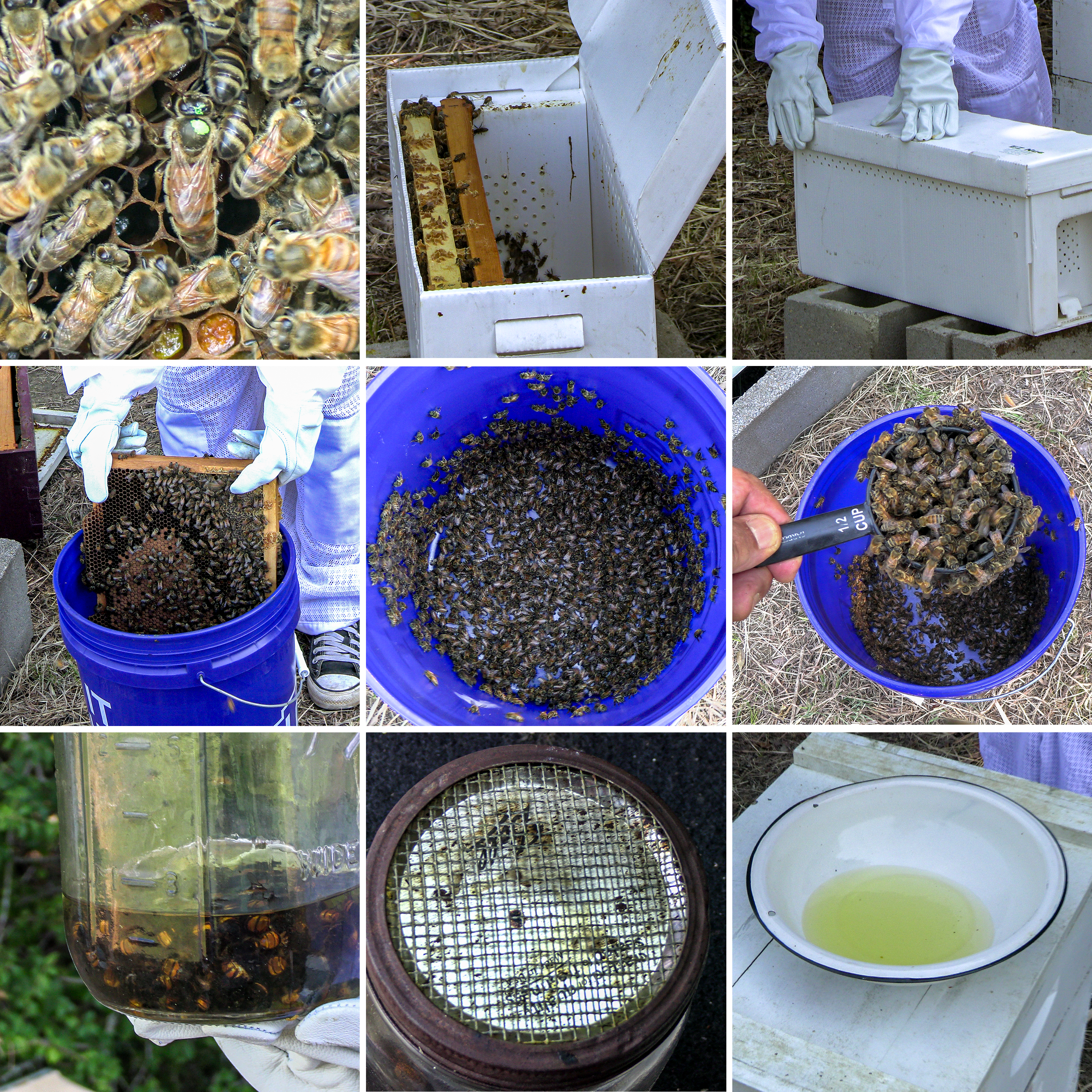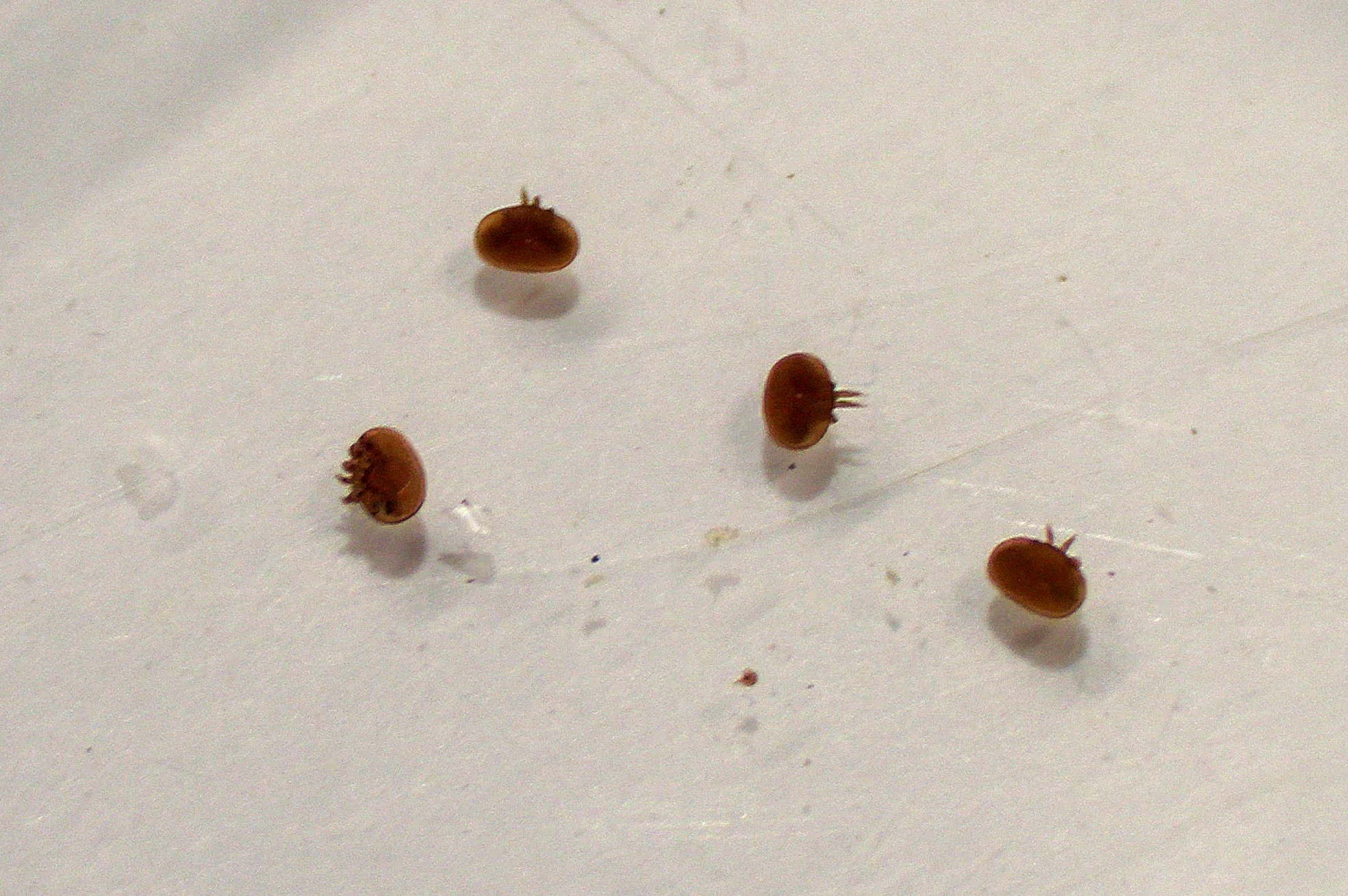Sampling for Varroa Mites Using an Alcohol Wash
Varroa mites remain the major killer of honey bees worldwide. They transmit viruses to bees, and these viruses kill bee colonies. Many beekeepers use chemical pesticides to control mites. As with other integrated pest management (IPM) plans, decisions on when to use chemical interventions should be based on regular sampling of the pest.
The primary goal of IPM is to manage a pest population with multiple tactics to minimize the need for pesticide treatments. Pesticides can harm honey bees and contaminate wax and honey, so they must be used only when necessary to control varroa mites. Additionally, frequent and repeated use of pesticides can lead to resistant mite populations. Therefore, pesticides should only be used when mite populations reach critical thresholds.
Beekeepers in Mississippi should sample at least twice a year, in early February and early July, so that subsequent use of chemicals will not interfere with honey production or the production of winter bees.
The most accurate sampling procedure is known as the alcohol wash. A sample of 400 nurse bees (half a cup) is taken from the broodnest of a colony, and the bees are killed by plunging them into rubbing alcohol (70 percent). The bees are shaken in the alcohol to loosen the mites. The alcohol is poured through a mesh that retains the bees but allows the mites to flow onto a white pan or container. The white surface contrasts with the reddish mites, making counting them easier.
A mite sample in February can help beekeepers use chemical pesticides before harvestable honey is produced. Some chemical treatments require more than 45 days to kill most of the mite population; therefore, it is good to sample in the first 2 weeks of February to avoid contaminating honey. There is no research-based threshold for mite population during this time of year. Still, a threshold of 1 mite per 100 bees is recommended, as the average growth rate of mite populations would usually allow mite populations above this level in February to exceed damaging levels during honey production in May/June.
The treatment threshold for the remainder of the growing season (May through October) is 3 mites per 100 bees. This is a research-based threshold. Beekeepers should sample no later than the second week of July, just after harvesting the spring honey. If the mite population exceeds the threshold, there is ample time to treat colonies before winter bees are produced. It is important to protect winter bees from exposure to high mite loads or pesticides during their development within capped brood cells.
Procedure for Conducting an Alcohol Wash

- Find the queen and place her in a cardboard nuc box to temporarily protect her from being lost while her colony is sampled. It is easier to find marked queens.
- Choose two combs with adhering nurse bees, as mites prefer riding on these younger bees.
- Pick brood combs with uncapped larvae in some brood cells.
- Shake the bees from both combs into a 5-gallon bucket and mix them thoroughly before collecting the sample.
- Collect a half-cup of bees (approximately 400 bees) and place them in 70% alcohol in a commercial sampling container or a glass jar fitted with a dome lid.
- Agitate the bees for 3–5 minutes. If using a glass jar, replace the dome lid with a mesh lid and pour the alcohol and mites into a white pan for counting (Figure 2).
- Repeat until no more mites are washed from the sample.
- Add the mites dislodged from sequential washes and divide the sum by 400 bees to obtain the mite load as a percentage. For example, 28 mites found on a half-cup of bees equals 7 percent (28 mites ÷ 400 bees). A value of 7 percent would easily exceed the threshold level of 3 percent, so the colony would need to be treated.

When Mite Levels Exceed Thresholds
Beekeepers commonly use pesticides to manage varroa mite infestations. These chemicals pose risks to bees due to contamination of beeswax and honey, as well as potential direct health effects on the bees. Synthetic pesticides are formulated onto no-pest strips that hang in the broodnest for up to 45 days.
Beekeepers often refer to these synthetic formulations as hard pesticides. Hard pesticides include Apivar (active ingredient: amitraz), Apistan (tau-fluvalinate), and CheckMite (coumaphos). Apistan and CheckMite are not recommended because these pesticides leave residues that contaminate combs for many years.
Some pesticides used against varroa mites are derived from natural sources. Beekeepers often call them soft pesticides. Soft pesticides are usually delivered to bee colonies with a flash treatment, providing active mite control for 3 to 10 days. Soft chemicals include organic acids (e.g., formic and oxalic acids) and essential oils (e.g., thymol).
The choice of which chemical to use is complex and beyond the scope of this publication. For more guidance on which chemicals are safe to use during different times of the year, consult MSU Extension Publication 2826 Managing Varroa Mites in Honey Bee Colonies or the Varroa Management Guide from the Honey Bee Health Coalition.
The information given here is for educational purposes only. References to commercial products, trade names, or suppliers are made with the understanding that no endorsement is implied and that no discrimination against other products or suppliers is intended.
Publication 4049 (POD-10-24)
By Jeffrey W. Harris, PhD, Associate Extension/Research Professor, Agricultural Science and Plant Protection.
The Mississippi State University Extension Service is working to ensure all web content is accessible to all users. If you need assistance accessing any of our content, please email the webteam or call 662-325-2262.





